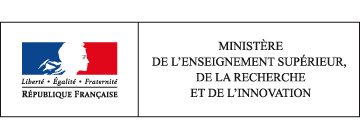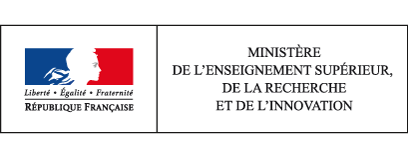OECD
Organisation pour la Coopération et le Développement Économique
2 Rue André Pascal, 75016 Paris
http://www.oecd.org/
This source is used in these chapters:
At the start of the 2013-2014 academic year, the number of students receiving support stood at more than 660,000, or approximately 35% of students enrolled for a course for which a grant was available. In all, the amount of financial and social support provided came to almost €6 billion in 2013, compared with €3.5 bn in 1995. [read more]
In 2013-2014, 91,800 teachers were working in public higher education establishments under the responsibility of the MENESR, out of a total of about 150,000. In 2012, France had 15.6 students per teacher against an average of only 14.4 in the OECD countries. A quarter of these employees are posted in the Ile-de-France region. [read more]
France’s gross domestic expenditure on research and development has doubled since 1982 and accounted for 2.23% of GDP (€46.5 billion) in 2012. Businesses alone implemented 65% of R&D expenditure and funded 59% of gross national expenditure on R&D. [read more]
In 2012, half of intramural business enterprise expenditure on R&D (BERD) was focused on six of the 32 industrial branches that benefit from R&D (‘Manufacture of motor vehicles’, ‘Manufacture of air and spacecraft and related machinery’, ‘Manufacture of basic pharmaceutical products and pharmaceutical preparations’, ‘Computer-related and information service activities’, ‘Professional, scientific and technical activities’ and ‘Manufacture of chemicals and chemical products’). In the public sector, dedicated research institutions (EPST and EPIC) carried out 55% of all R&D funded by intramural government expenditure on R&D (GOVERD). [read more]
In 2012, the gross domestic expenditure on R&D (GERD) of France's main public research institutions amounted to €9.1 billion, a fall of 1.1% in relation to 2011. These institutions carry out 55% of public research and are key stakeholders in research and development in France. The French National Centre for Scientific Research (CNRS) and the civil division of the French Alternative Energies and Atomic Energy Commission (CEA) conduct a third of public research, with GERD of €5.5 billion. [read more]
The number of firms claiming the R&D tax credit (CIR) has risen sharply since the scheme was reformed in 2008. Nearly all firms currently conducting R&D in France are aware of and make use of the R&D tax credit when carrying out R&D projects. The amount of R&D tax credit paid out in 2012 totalled €5.3 billion, equivalent to 0.26% of French GDP and double the amount of direct government funding for business R&D. [read more]
Businesses provide the majority (60%) of funding for gross national expenditure on R&D, with businesses based in France financing around 55% of the country’s gross domestic expenditure on R&D. This level of funding by the private sector is much lower than that recorded in Japan, Germany and the United States. [read more]
In 2012, 564,500 people were involved in research activity in France. In the last three years, the number of researchers has increased more rapidly in business enterprises (+16%) than in government (+2%). Women represent 29% of all research personnel and 26% of researchers. [read more]
One researcher in three in the government sector and one in five in business enterprises is a woman. As in other countries, women are less well represented in all sectors among researchers than in the professions providing research support. The male to female ratio in research personnel depends on the research field. [read more]



